Recommended
Forget work-life balance, it’s about work-life integration
UNLEASH caught up with Sally Sourbron, VP Global Talent EMEA at ServiceNow, to discuss their response over the past 12 months and her plan for the future, which includes a mindset shift from work-life balance to work-life integration.
- Driving enablement and best practice for shifting the mindset from work-life balance to work-life integration is crucial for Sally Sourbron’s HR strategy at ServiceNow.
- ServiceNow’s HR leadership has carried out a number of surveys over the last 12 months to make sure they have their finger on their organizations’ pulse, which has led to tangible business results and improved employee experience.
- The organization has also had the challenging task of onboarding 30% of its European employee population during the pandemic.
When we spoke to Sally Sourbron, VP Global Talent EMEA at ServiceNow a number of days ago, she told us that the thing she is most proud of from the last year is the fact that 30% of her EMEA employee population has actually been hired during the pandemic.
This staggering figure, as it does for many organizations’ stories that we hear from our HR leader network, means that these employees have had to be onboarded in a way that means they’ve never met their manager, and they’ve never been to a ServiceNow office.
Sally feels confident though, that despite the challenges this remote onboarding experience presents, that they’ve enabled a great employee experience, by leveraging their own Enterprise Onboarding apps. These have enabled employees to do many of the usual onboarding processes, like reviewing policies, signing contracts, choosing benefits, and even meeting colleagues virtually, before ‘day one’.
This strategy, Sally said, enables her employees to “get immersed a little bit more in our culture, get to understand the organization more and who they’re going to be working for so that when they start on day one, they can start immediately being productive and launch their career journey with the organization.”
Listen to more of Sally’s experiences and expert advice on shifting from work-life balance to work-life integration by watching our exclusive interview with her now, and read on for some of the key takeaways.
Keeping on the pulse within the organization
Sally told UNLEASH, that they’ve been reflecting heavily on the notion of work-life integration and trying to pave a way for the impacts of COVID-19 to be an enabler for positive change in the work experience.
They’ve been surveying employees on a regular basis to keep in contact, understand their sentiments, and ultimately make sure that they are really listening to workers and pivoting actions to support what comes out of these findings. ServiceNow has a standard engagement survey they carry out twice a year, which provides a pulse of the entire organization. An additional survey they’ve looked at is around the return to the workplace to understand employee feelings around this. Also, they have been doing a wellbeing survey every month.
These surveys have had a measurable impact on the leadership team and wider organization, as they’ve been able to have consistent, positive engagement with their employees that has then impacted discretionary efforts and not only impacted their internal decision-making but also on the services they are offering to their clients. For example, their Safe Workplace and their Emergency Response Management apps.
In fact, the sentiments and outcomes out of their studies have been real drivers for these apps as Sally told us, “the design was sparked back in March last year. So in 2020, when we looked at what was going on in the world around us, and how we were responding as an organization that helped our engineers build out these great value-add apps.”
One size does not fit all
One of the big outcomes from the surveys that ServiceNow has been carrying out is around the mental wellbeing aspect for employees and their work-life balance.
We can also see this reflected in the wider global workforce in many studies, including in ServiceNow’s recent report, “The 2021 Employee Experience Imperative”, where they surveyed 3,000 employees from large European enterprises. They found that 60% of employees agreed COVID-19 will have a significant impact on the work experience for years to come, and among desk workers, working remotely, this incidence is as high as 74%.
On this, Sally said, “it’s really hard when you think about, first of all, the different personas that we’re serving…employees that live on their own…employees who are caring for family members…employees that are being teachers whose children have been doing remote schooling, that’s all been really challenging.” The challenge, she considered, is adapting and creating a strategy that drives the best for all those workforce segments.
The other challenge is the international nuances that impact the need to be adaptable in communications from country to country, and even more locally. She commented, “you’ve got employees that might be seeing what’s going on in Israel where life is pretty much back to normal, they’re feeling something very different to say, France.”
These differences in employees’ lived experiences really impact how things need to be communicated within an organization and as Sally said, it’s “hard to balance the local voice as well as understanding the global perspective.”
Thinking differently about work-life integration
Sally shared with us, that the pandemic has created some very bad habits that organizations now need to start unpicking and correcting. To do this, she offered, organization leaders need to enable managers to adapt and lead with greater flexibility without the reliance on coming together with their teams physically, and secondly, enable employees to learn and understand work-life integration better.
“We’ve historically talked about work-life balance, something that is the forefront of any company’s mind, certainly in this day and age. But now I think it’s also adapting more to work-life integration, and defining that, and helping our employees understand the impact on their mental health and how they disconnect from work. They’ve got to really think differently about work-life integration and so I’m trying to think how we drive enablement and best practice around that across the organization”, she discussed.
Some steps in the right direction could be in focusing on the consumerization of the employee experience, which should enable and empower employees by being able to provide them with the support and self-service they need to be productive and effective in their work. Equally, the continuation of flexibility should be a focus. Giving this onus onto the employee to manage their time, manage their workflow and fit this into their home-life is really crucial to move from this notion of work-life balance to work-life integration and being more successful with reducing burnout and negative mental health impacts.
Reimagining the purpose of the office
Moving forward, ServiceNow will be examing what the hybrid model looks to their organization, and within this strategizing, will be a consideration for what the office now means for their business and understanding what the function of the office will be for them. Sally sees “enablement, innovation, collaboration, those sorts of elements really driving the purpose of coming to our offices.”
And culture weighs heavily into this future-gazing strategizing – regardless of whether employees are back in the office or still working remotely, they want to be able to continue the culture and high energy within the organization to drive high-performing teams.
This is top of mind for Sally, given her experience of working in the tech industry, where the advanced use of technology saw organizations leveraging agile and remote ways of working but often at the expense of empty offices, for many days of the week, resulting in a drop in engagement scores and collaboration. She feels this was because there wasn’t enough coming together and connecting with each other as an organization. She says there is still a lot of learning to do around this to get the right balance on culture.
More positively though, she followed up by noting, “For me, I think, from an opportunity perspective, one of the biggest advantages is around opening up diverse talent pools. And I’m certainly thinking about women returning to the workplace for instance, how they can then use the flexibility that we will see in the future of work, to give them the confidence and the encouragement to come back to the workplace. That is a huge opportunity that I’m looking to explore internally at ServiceNow in EMEA”.
You can read more about ServiceNow’s report “The 2021 Employee Experience Imperative” here.
Sign up to the UNLEASH Newsletter
Get the Editor’s picks of the week delivered straight to your inbox!

VP Global Talent EMEA, ServiceNow
